Ferrari’s performance last season was one of the worst in its Formula 1 history and I simply don’t buy into the fact that it was because the car simply had too high a drag level or a nervous rear end. Yes, on top of that it was suffering from a lack of horsepower but the problems go far deeper than that.
What is clear is that the changes it had to make thanks to the technical directives issued pre-2020 did have an impact on the engine’s performance.
It’s worth remembering what happened an hour before the race in Abu Dhabi in 2019, the FIA issued a statement saying that it was investigating the difference in Ferrari’s declared fuel load for Charles Leclerc’s car and what was found to be its actual fuel load when checked. After the race, the governing body issued the following statement:
“Technical Directive/014-19 required teams to declare the amount of fuel that they intended to put in the car for the laps to the grid, the formation lap, the race, the in-lap and any fire-ups that would be needed.
“The technical delegate was able to confirm the fuel mass put in the tank by checking in accordance with the procedure specified in TD/014-19.
“There was a difference of 4.88kgs between the team’s declaration for car 16 and the technical delegate’s measured fuel mass.
“The team’s declaration was therefore inaccurate and constituted a breach of the technical directive. This in turn constitutes an infringement of Article 12.1.1i of the International Sporting Code. Accordingly, the stewards determined that the team should be fined 50,000 Euros for its inaccurate declaration.”

So the big question for me is, would any team running in F1 try to push the regulations past the acceptable limit?
The simple answer to that is yes. And if I was intending to push the limits on something, I always think you might as well be caught for trying to rob the Bank of England as opposed to a corner Post Office!
We will never know the full extent of any Ferrari infringements – and it’s important to note that when it came to the operation of the power unit the FIA couldn’t prove its suspicions and Ferrari has always denied any wrong-doing. The 4.88kgs discrepancy was what came to light, so there was something going on there, but who knows how much more was or was not going on.
All that is behind Ferrari now, so it’s onwards and upwards – or so it hopes – with the introduction of the new SF21. So as with the airflow, I will start at the front and work through it to the rear of the car.
The leading edge of the nose detail is much more intricate where it runs into the cape underneath. I’m surprised Ferrari hasn’t gone for the full narrow nose as it has the resources both in terms of cash and manpower to do so and get through the crash test. What it lacked was enough development tokens and given the decision was made to spend those on the rear, Ferrari must feel there is more to be gained from this.
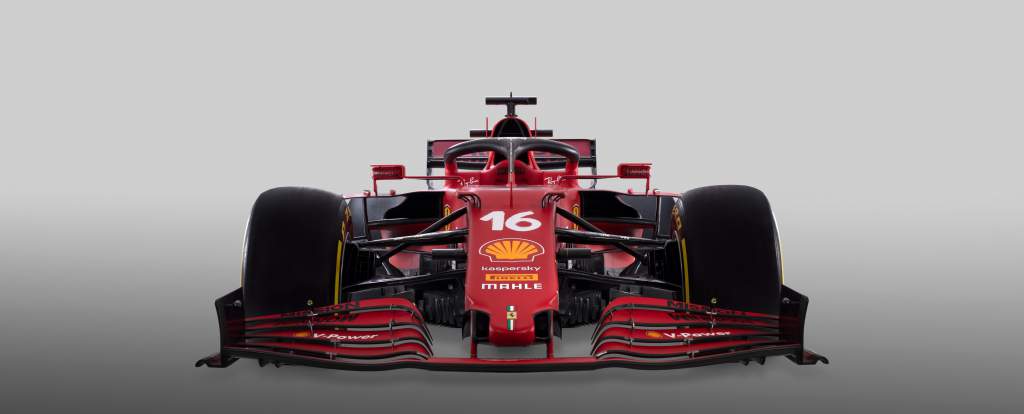
But as I said, the airflow starts at the front and the rear can only work with what’s presented to it. I think Ferrari has missed a trick with this decision.
The front wing detail is not so different from last year’s spec. It will probably be all-new as the front wing pillar detail looks just that bit different, but the span-wise loading on this version of the wing doesn’t look much different.
The front wing endplate now has a curved cut-out at the top rear corner as opposed to an L-shaped cutout. This will allow more outwash and the shape will be more comparable with the tyre profile when the steering lock is applied, so should give more consistency of outwash airflow.
Ferrari has also added some small L-shaped turning vanes to the top outer corner of the nose-to-chassis interface. These work with the S-duct that pulls airflow through from underneath the nose to the top of the nose.
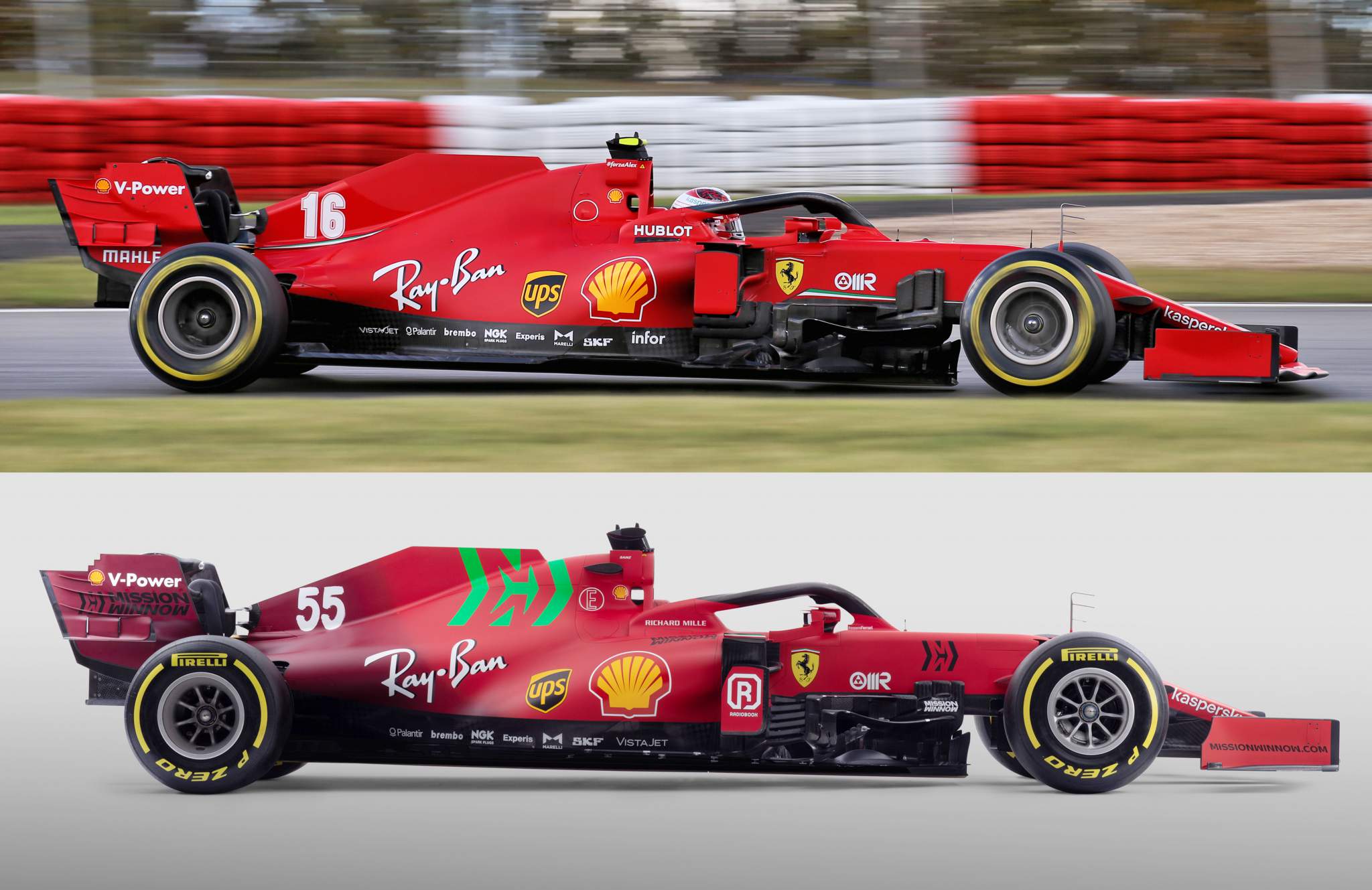
This S-duct improves the airflow going under the nose, and by being pulled out through to the top of the chassis by the low pressure in that area it actually reduces the lift on that section on the top of the chassis. These small L-shaped vanes will make that all work that little bit harder.
I am a fan of doing the best you can to optimise the performance of the tyres. These four black bits of rubber are the only thing that connects the car to the ground and I’m surprised Ferrari hasn’t bothered too much with the front suspension geometry.
The Mercedes and quite a few other cars have the ‘growth’ on the front upright to raise the top wishbone outboard pick-up point upwards and inside the front tyre. This gives a little better camber change when the suspension goes into compression, so with it you don’t have to run as much static camber, which will increase the contact patch in slow corners.
And even if you do decide to run the maximum allowable static camber, it will give you even more camber in high-speed corners to help deal with the increased cornering forces generated at high speed, I think Ferrari missed a trick here as well.
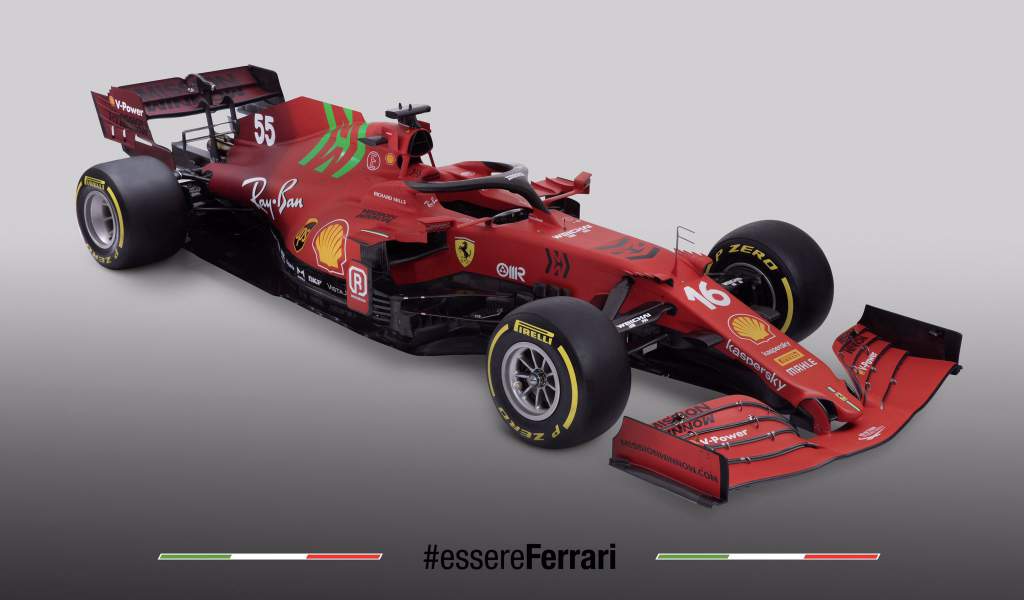
From the head-on pictures, we can also see the radiator inlet opening has changed shape and looks a little smaller. This shape change will be the beginning of the more compact sidepod profile.
The smaller inlet will be possible because of the airbox cooling inlet becoming larger. It has the triangular rollover bar within it which will feed the turbo but the more rounded side openings will be for cooling some of the other smaller components like hydraulics, MGU-K, MGU-H or battery storage.
Moving to the bargeboard area, the function is very similar, which is to scavenge as much mass flow out from underneath the raised section of the chassis. This improves the performance of the front wing, the boomerang wings coming out from the chassis horizontally – if swooped a little bit here and there – tidy up the wake coming off the trailing edge of the front wing.
By presenting this flow to the leading edge of the underfloor as uniformly as possible, it improves the performance of the leading corner of the underfloor. With these new regulations reducing the floor area further rearward, the bargeboards priorities will have changed slightly to increase the performance of this front corner area and that is where these new horizontal vanes come into play.
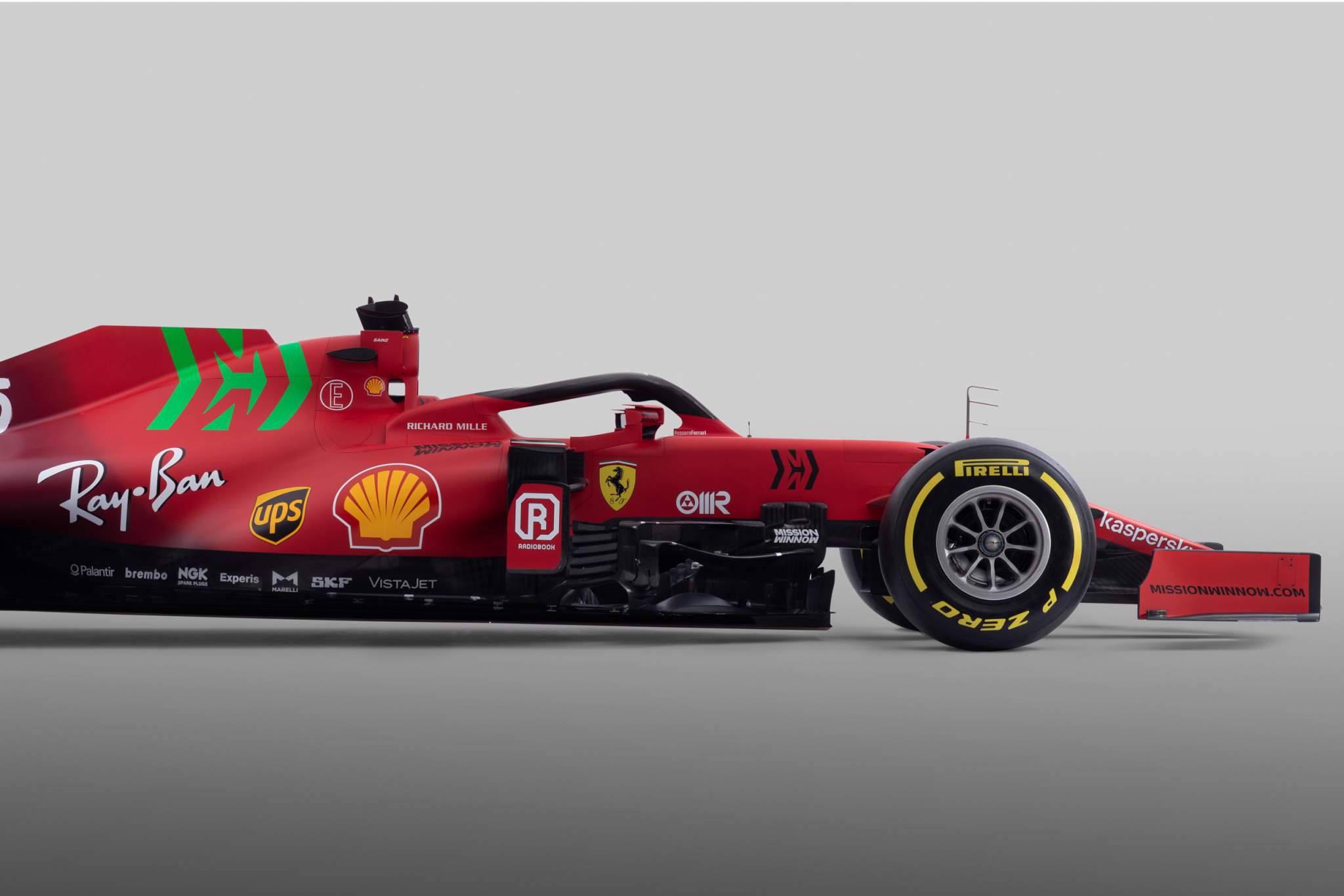
They work in conjunction with the upturned section on the outer edge of the side of the floor, creating a small diffuser in its own right. Some of the rest of the vanes will still be intended to try as best possible to seal the sides of the floor further rearward, but if you can work this front corner harder the leakage from the floor regulation change won’t have as big an impact on the underfloor’s overall downforce.
The sidepods have taken on the tighter and more compact approach of more or less all of the others. Before, they were like a blanket had been draped over everything that was inside them. Now they are a little more cling-film wrapped, with each section defining its own body profile and then blending together.
This approach will increase the volume of airflow that goes over the top surface of the floor and gets pulled through the Coke bottle area by the low pressure behind the car. This, in turn, reduces the volume of airflow that gets pulled under the floor which if not addressed reduces the potential for underbody downforce.
The upper sidepod surface and engine cover sweeps down more dramatically than for most other cars. It’s definitely more dramatic than the 2020 version. This will improve the performance of the diffuser and improve its efficiency as more mass flow is directed into its wake. It will also improve the efficiency of the rear wing with more mass flow for the underside of the wing to influence.
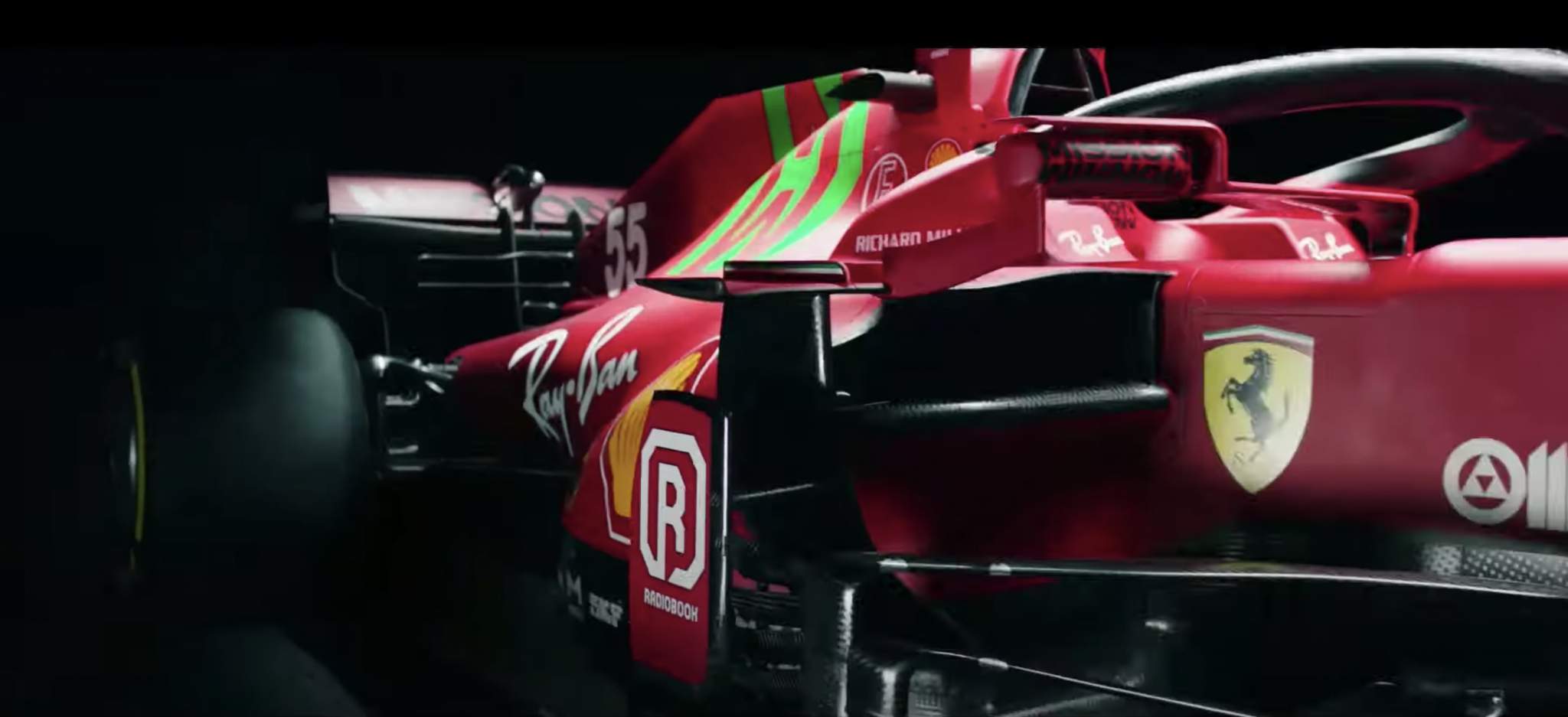
Ferrari has said it has spent its tokens on the rear of the car. I’m not surprised at this as Mercedes publicly stated that what it had done to its rear suspension for 2020 was its biggest secret weapon. And all know Mercedes are an honest bunch and would never throw a googly out there, don’t we?
We don’t know in detail what Ferrari has done with the rear suspension but from what The Race hears, it has raised the differential. That’s a slight negative as far as centre of gravity height is concerned but aerodynamically it will open up the space between the driveshaft and the diffusers; upper surface – especially at high speed when the car is being forced towards the ground.
This will allow the diffuser to work more efficiently in general and with a bigger gap from the driveshaft to inboard corner of the diffuser, this will also help reduce diffuser re-attachment problems when the driver hits the brakes.
We also hear that some of the rear suspension linkage is now mounted behind the driveshaft, not on the crash box, but I think we need to see a few more pictures before we can really comment on what the suspension layout is really all about in detail.
From what I have seen, Ferrari has tried very hard with revisions to all of the aero surfaces. But we all know that the main problem was the spacer between the rear of the chassis and the gearbox.
If Ferrari has had a ‘eureka’ moment and got on top of that situation it might just have a chance. But I don’t think I am seeing a Mercedes or Red Bull beater – although only the stopwatch will tell.






